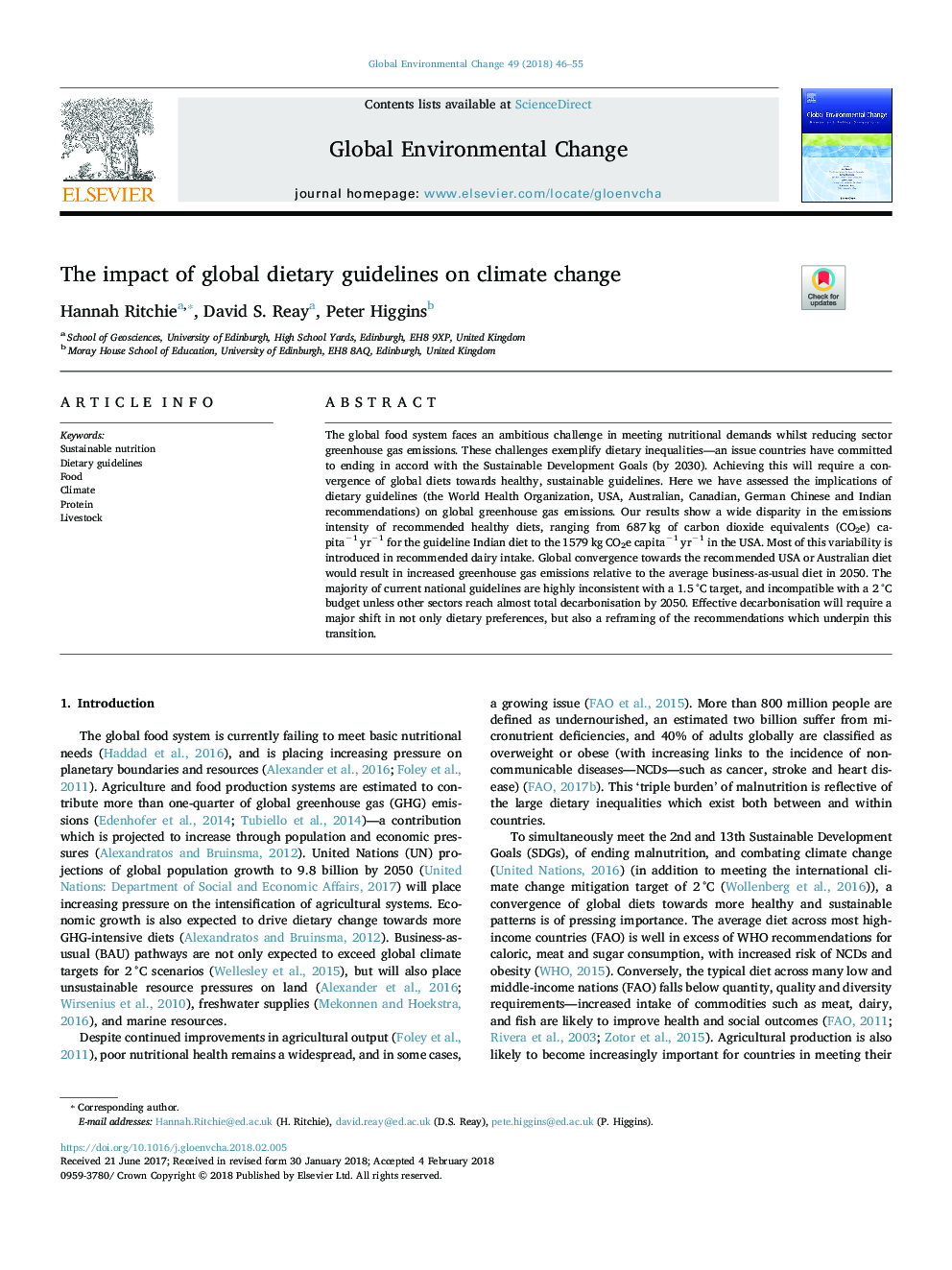| Article ID | Journal | Published Year | Pages | File Type |
|---|---|---|---|---|
| 7468971 | Global Environmental Change | 2018 | 10 Pages |
Abstract
The global food system faces an ambitious challenge in meeting nutritional demands whilst reducing sector greenhouse gas emissions. These challenges exemplify dietary inequalities-an issue countries have committed to ending in accord with the Sustainable Development Goals (by 2030). Achieving this will require a convergence of global diets towards healthy, sustainable guidelines. Here we have assessed the implications of dietary guidelines (the World Health Organization, USA, Australian, Canadian, German Chinese and Indian recommendations) on global greenhouse gas emissions. Our results show a wide disparity in the emissions intensity of recommended healthy diets, ranging from 687â¯kg of carbon dioxide equivalents (CO2e) capitaâ1â¯yrâ1 for the guideline Indian diet to the 1579â¯kgâ¯CO2e capitaâ1â¯yrâ1 in the USA. Most of this variability is introduced in recommended dairy intake. Global convergence towards the recommended USA or Australian diet would result in increased greenhouse gas emissions relative to the average business-as-usual diet in 2050. The majority of current national guidelines are highly inconsistent with a 1.5â¯Â°C target, and incompatible with a 2â¯Â°C budget unless other sectors reach almost total decarbonisation by 2050. Effective decarbonisation will require a major shift in not only dietary preferences, but also a reframing of the recommendations which underpin this transition.
Related Topics
Life Sciences
Environmental Science
Environmental Science (General)
Authors
Hannah Ritchie, David S. Reay, Peter Higgins,
